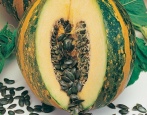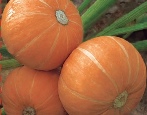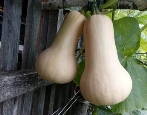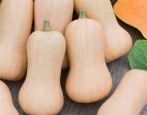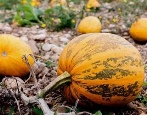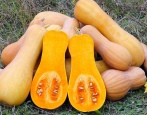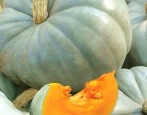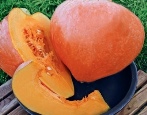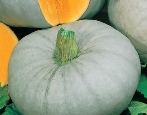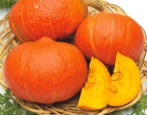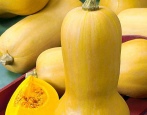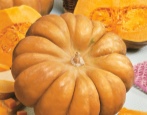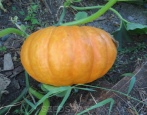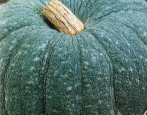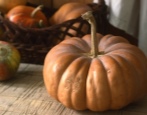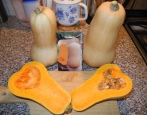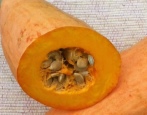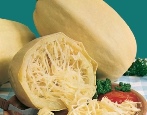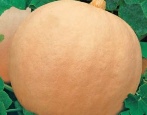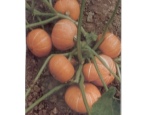
- Authors: Japan
- Name synonyms: Hokkaido
- The form: turban
- Weight, kg: 2-2,5
- Coloration: red-orange
- Color of the pulp: orange
- Pulp (consistency): crispy
- Taste: sweet
- Yield: fruitful
- Average yield: 4-5 kg / m2
Pumpkin is a unique vegetable that many people like. The Hokkaido variety meets many of the requirements that summer residents select for themselves.
Breeding history
Hokkaido pumpkin was bred by Japanese breeders, so Japan is the main distribution area. In Europe, the Potimaron variety, which is a Hokkaido variety, is popular. In Russia, an analogue of the Belarusian selection is popular - a hybrid of Ishiki Kuri Hokkaido.
Description of the variety
The culture belongs to large-fruited varieties. It contains many vitamins and trace elements necessary for the body. The Hokkaido pumpkin has a number of benefits. The first thing that summer residents note is a unique and inimitable taste. The bushes of the plant are unpretentious, so they can be planted on any soil. Agrotechnical care is simple, even a beginner can handle it.
Pumpkin fruits have a long shelf life. They do not lose their qualities even after a little freezing. And thanks to the good density of the peel, the pumpkin can be transported over long distances. It is noted that you can eat not only the pulp of the pumpkin, but also its seeds.
Of the minuses, it can be noted that the bushes need to be formed. And also, with improper care, the culture can be attacked by insect pests.
Characteristics of the appearance of plants and fruits
Shoots are long and dense. Leaves are standard size, heart-shaped. There are many inflorescences, they are quite large. Deep yellow in color. It is recommended to periodically remove the inflorescences. On one bush, 2 to 4 fruits should be left.
Fruits are large, 12-15 cm in diameter, portioned by type. The shape of the pumpkins is turbid. Fruit weight is 2-2.5 kg. The rind, although thin, is quite dense. It is red-orange in color. Many summer residents say that it is quite difficult to cut a pumpkin; it requires not only skill, but also a special approach.
The pulp is firm and crunchy, without much fiber or wateriness. Orange in color. The seed chamber is medium in size, many large seeds are formed inside.
Purpose and taste
Hokkaido pumpkin has a sweet and distinct taste. The fruits can be used for home cooking and cooking. Delicious mashed potatoes, soups, jams, as well as a base for cakes are obtained from the vegetable.
The main feature of fruits is that the longer they are stored, the less intense the taste becomes. Over time, it can become more bland.
Ripening terms
The culture belongs to mid-season varieties. Full ripening takes 100-110 days. Harvesting occurs in August-September. The fruits are not formed together, so they can ripen at different times.
Yield
Good and stable yields are noted. 4-5 kg can be removed from 1 m2.
Growing regions
The Hokkaido pumpkin, which was produced directly in Japan, is best grown in a quieter, warmer climate. The Belarusian analogue is suitable for growing in almost all regions of Russia.
Growing and caring
Hokkaido pumpkin is very thermophilic, therefore it is necessary to choose a sunny place that will be slightly blown by the winds. For the formation of bushes, it is also recommended to prepare pegs or cones. This is necessary so that branchy lashes do not spread along the ground. It is best to thoroughly fertilize the soil in the fall, since the culture responds well to fertile and mineral soils.
The variety can be bred by seed, as well as seedlings. The seed method is suitable for the southern regions, the rest require germination.The best time for harvesting seedlings is the end of April. It is best to do this in peat pots, since any pumpkin variety does not like picking. Saplings should be planted when 4 or more strong leaves are formed. The soil temperature should reach + 18 ° С.
Agrotechnical care must necessarily include watering. Irrigation should be carried out regularly (once a week), with the expectation of at least 15-20 liters per 1 m2. In the inflorescence phase, it is best to increase the frequency of watering. After each irrigation, you need to loosen the soil, simultaneously removing small and large weeds.
Active feeding is not worth it. If all the necessary fertilizers were applied in the fall, then the pumpkin will not need any surplus. Periodically, you can add organic matter, water with a solution from bird droppings or mullein.
It is necessary to collect the pumpkin before the first frost. It is better to leave to ripen in a golbets or a pit. You need to store the entire crop in a dark room on a rack at an air temperature of no more than + 6 ° C. Keeping life up to 6 months.
